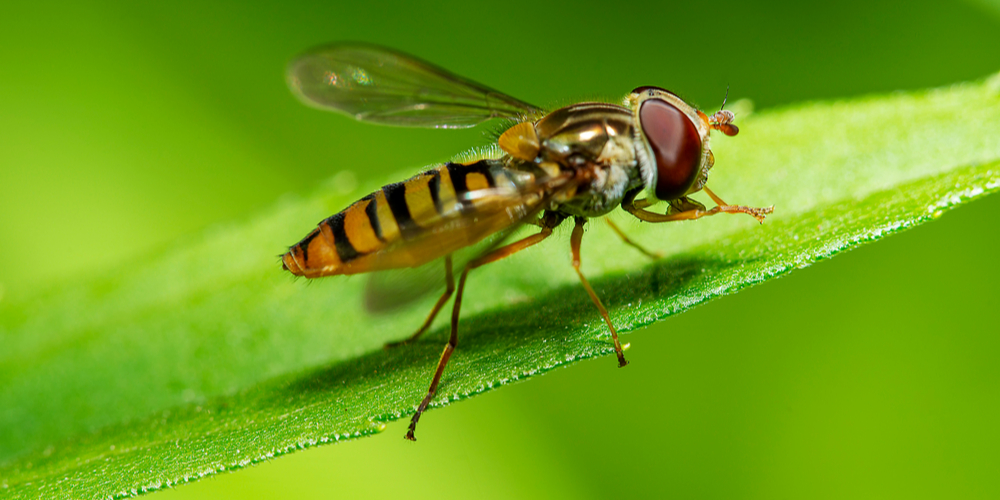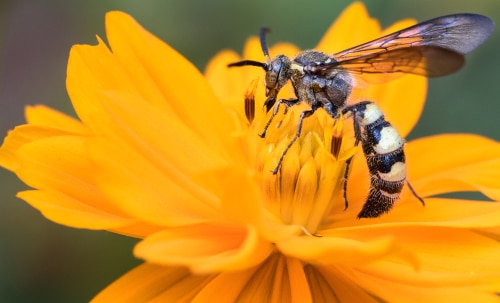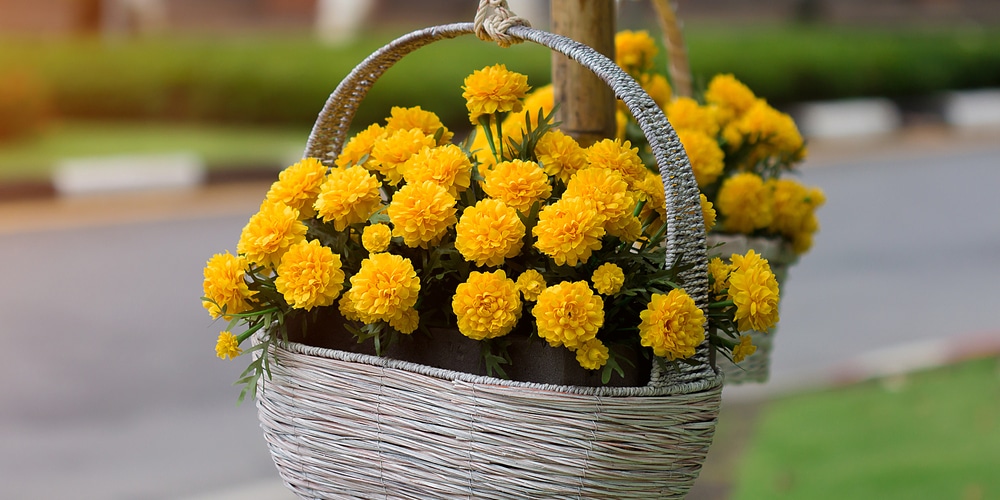While flies might not be very welcome guests in your home, any gardener should welcome them like guests of honor to their property. While some flies and insects may be considered pests due to their destructive nature, certain flies play essential roles in the pollination process, facilitating flowering plants’ propagation.
Whether they are coming in to feed on nectar, find shelter, or prey on pests, their presence will serve to boost the health and productivity of your farm or garden. In this piece, we’ll be taking a look at some of the flies you should hope to find in your garden and the plants that are most likely to call them your way.
Let’s dive right in.
Hoverflies
This fly is also known as the syrphid fly, flower fly, or predatory aphid fly. An adult hoverfly resembles a bee in its appearance, but it does not sting, so don’t let that worry you. They prey on mealybug and aphids, which are harmful to plants.
The plants that attract them: Common Yarrow (Achillea filipendulina), Lavender Globe Lily (Allium tanguticum), Basket of Gold (Alyssum saxatilis), Golden marguerite (Anthemis tinctoria), Former-wing saltbush (Atriplex canescens), Caraway (Carum carvi), Coriander (Coriandrum sativum), Queen Anne’s Lace (Daucus carota), etc.
Ladybugs
This is a well-known and well-loved garden visitor to yards across the country and is distinguished by its red-on-black polka dot outer shell. However, in its larval stage, it is black with orange-colored marks on its body. It is most beneficial at this point in its life, as it voraciously consumes harmful pests.
Plants that attract flies: Coriander (Coriandum sativum), Dill (Anethum graveolens), Prairie sunflower (Helianthus maximilianii), Carpet bugleweed (Ajuga reptans), CA Buckwheat (Eriogonum fasciculatum), Four-wing saltbush (Atriplex canescens), Fennel (Foeniculum vulgare), Dandelion (Taraxacum officinale), etc.
Parasitic Wasps
Don’t be alarmed! These aren’t the type of wasps we’ve all grown to be wary of. Rather than carry traditional stingers, the wasps you want in your garden are specially evolved so that the females can lay eggs within the bodies of pest insects. When these eggs hatch, they will immediately start eating the pest from the inside out, killing them in the process. All that will remain will be the pests’ mummified remains. Such wasp species include Trichogramma wasps, Ichneumnid wasps, and Braconid wasps.
Plants that attract flies: Marigold (Tagetes tenuifolia), Pennyroyal (Mentha pulegium), Statice (Limonium latifolium), Cosmos white sensation (Cosmos bipinnatus), Purple poppy mallow (Callirhoe involucrata), Lavender globe lily (Allium graveolens), Common yarrow (Achillea millefolium), etc.
Lacewings (Chrysopa spp.)
The Chrysopa spp. is a pretty little green or brown insect that carries large, lacy wings. Their larvae are the ones we’re looking for, however. Their larvae are fondly referred to as aphid lions in reference to their voracious appetite for aphids, although they also prey on pest insect eggs, mites, and other small insects.
The plants that attract them: Purple poppy mallow (Callirhoe involucrata), Golden marguerite (Anthemis tinctoria), Dill (Anethum graveolens), Fern-leaf yarrow (Achillea filipendulina), Angelica (Angelica gigas), Tansy (Tanacetum vulgare), etc.
Minute Pirate Bugs and Damsel Bugs
The Orius spp. is a tiny bug that likes to feed on smaller insects or mites such as scales, aphids, thrips, whiteflies, and so on. The Nabis spp. (Damsel bug) tends to prey on destructive leafhoppers, small caterpillars, plant bugs, and aphids. They are typically dull brown and might resemble some pest species, but these have longer, narrower heads.
The plants that attract them: Cosmos (Cosmos bipinnatus), Spearmint (Mentha spicata), Peter Pan goldenrod (Solidado virgaurea), Fennel (Foeniculum vulgare), Caraway (Carum carvi), Marigold (Tagetes tenuifolia), etc.
Tachinid Flies
These are highly desirable flies to have on your property, as they are parasites that target stink bugs, beetle larvae, fly larvae, and squash bug nymphs. They will also prey on destructive caterpillars such as armyworms, cutworms, corn earworms, imported cabbageworm, cabbage loopers, and so on.
The plants that attract them: Pennyroyal (Mentha pulegium), Golden marguerite (Anthemis tinctoria), Crimson thyme (Thymus serpyllum coccineus), Lemon balm (Melissa officinalis), Buckwheat (Eriogonum fasciculatum CA), etc.
Plants that Attract Useful Flies: Final Thoughts
As we’ve seen, there are plenty of plants that you can add to your property that will attract useful flies. While some might be more ornamental or aesthetically pleasing than others, they can undoubtedly bring value to your property. Next time you’re looking for a new addition to your home or garden, be sure to give these options some consideration. You’ll be glad that you did.
Related article: Hanging plants that look beautiful and attract birds



